With its unanimous vote Sept. 8, the Blanco City Council delivered on progress toward a lasting solution with Protect Our Blanco for growth and development without wastewater discharge into the Blanco River. A contentious recent history is replaced today by a task force to discuss and quantify engineering options before the end of the year.
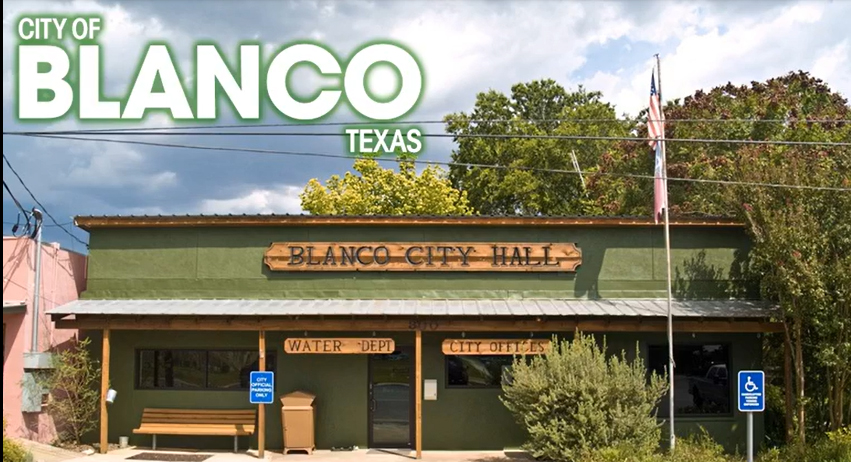
The vote represents a second step forward following the Aug. 25 presentation from David Baker, Executive Director of the Wimberley Valley Watershed Association, representing Protect Our Blanco and downstream stakeholders in Hays County, Hill Country Alliance, Save Our Springs Alliance, and Save Barton Creek Association, and Nick Dornak, Director of Watershed Services for The Meadows Center for Water and the Environment at Texas State University. The task force will be facilitated by the Meadows Center, under its two-year agreement with the City to identify sustainable water management solutions.
In its Sept. 8 meeting, the Council engaged in discussion with Dornak to arrive at a detailed motion that affirms a 90-day schedule and sets the next Council Meeting, Sept. 22, to approve the scope of work and composition of the task force. The four representatives for the City of Blanco were named: council members Matt Lewis and Deda Divine, and staff members Ronnie Rodriguez and Will Daves. Four additional members will be named by Protect Our Blanco. In principle, these actions create a fresh start for a process that affects people across the 412 square miles of the Blanco River Basin.
Council discussion included further questions. The City seeks detail on resources to be offered by the Protect Our Blanco proposal, beyond recent engineering studies and environmental research shared in the Aug. 25 presentation. Council members expressed concern that any study recognize and build on millions of dollars in improvements by the City to end discharge that “averted an environmental disaster.”
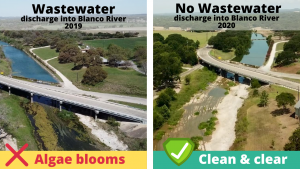 Beginning in October 2018, the City allowed treated effluent discharge to flow directly into the Blanco River. By the spring of 2019, the Blanco River had become filled with algae blooms downstream. Nutrient levels including nitrogen and phosphorus were too high to support a healthy river and prevent eutrophication and algae. When wastewater discharge into the Blanco River ended in December 2019, the river’s natural healing process returned the water to a cleaner, clearer appearance.
Beginning in October 2018, the City allowed treated effluent discharge to flow directly into the Blanco River. By the spring of 2019, the Blanco River had become filled with algae blooms downstream. Nutrient levels including nitrogen and phosphorus were too high to support a healthy river and prevent eutrophication and algae. When wastewater discharge into the Blanco River ended in December 2019, the river’s natural healing process returned the water to a cleaner, clearer appearance.
The task force proposal envisions a collaboration that recognizes the fundamental need to keep discharge out of the river, while recognizing the City’s interest in bringing more business to Blanco and helping the region’s population grow responsibly. Engineers can provide long-term solutions through jointly developed scenarios and calculations that span from conventional centralized to a variety of decentralized options. In particular, One Water systems handle wastewater as a resource, not a nuisance, which can be routed to reuse and other beneficial purposes that not only eliminate discharge, but also drastically reduce potable water demand.
For a city government with millions in debt obligations and perhaps tens of millions ahead, according to an engineering study, the task force offers further support to improve cost controls and tie revenue streams to capital outlays. Decentralized options promise more manageable scaling of capacity without discharge. Moreover, Hays County has committed to support the City of Blanco to preserve natural resources for its citizens downstream.
Protect Our Blanco continued its theme to be “good neighbors finding a peaceful balance,” working with the City as stewards of the river and our aquifers. Water’s impact permeates the Blanco’s limestone basin, through faults, fractures, and caves into the groundwater system, whose wells provide the sole source of drinking water for much of the Hill Country. Groundwater declines show that alternative water supplies are in desperate need, and beneficial reuse of treated wastewater could augment that supply and protect our aquifers.
The Blanco Council has achieved with its vote a concrete step toward uncommon balance of cost-effective growth and development without discharge, safeguarding water for future generations. Engineering options and detailed discussions must follow, but setting a peaceful course for success appears promising.
The WVWA and Protect Our Blanco presented to the Blanco City Council on Tuesday 8/25/2020 at 5:30. Meeting details: [City of Blanco Meeting Information]
Slide Presentation
Slides with Narrative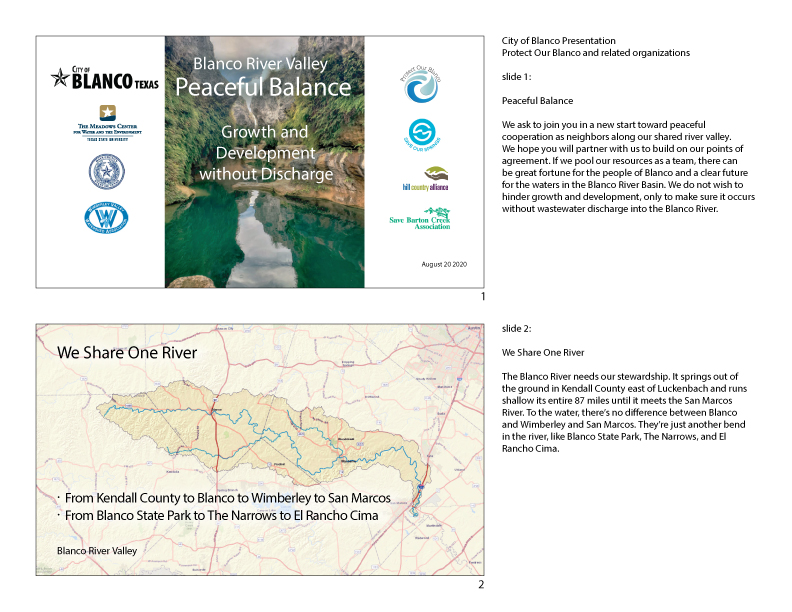
Municipal Utility District (MUD) Reference Materials
-
- TCEQ Summary of Application Requirements for the Creation of Municipal Utility Districts
- Policy Example: City of Dripping Springs Policy and Procedures for Municipal Utility Districts
- Policy Example: City of Austin MUD Policy
- TCEQ Water Districts: Applications, Forms, Guides, and Rules Website
- City of Austin Water District Application for Consent to Creation of, or Annexation to a Water District
Water Quality Studies and Engineering Analyses
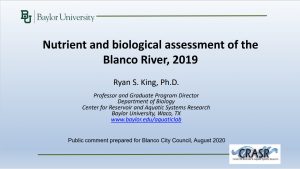
Final Report: Bioassessment of four Hill Country streams threatened by proposed municipal wastewater discharges (Dr. Ryan King, Oct. 2020) Nutrient and biological assessment of the Blanco River, 2019 (Dr. Ryan King, Baylor University, presentation to Blanco City Council, August 2020) |
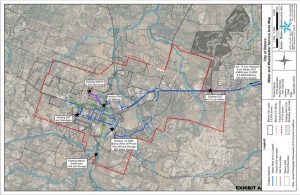
City of Blanco Wastewater Collection System Improvements for Proposed Service Area, (Preliminary analysis and report by Smith-Turrieta Engineering, January 2020) |
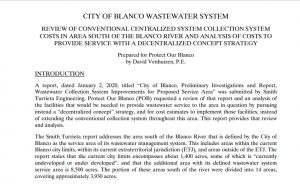
Review of Conventional Centralized System Collection System Costs in Area South of the Blanco River and Analysis of Costs to Provide Service with a Decentralized Concept Strategy, (David Venhuizen, 2020) |
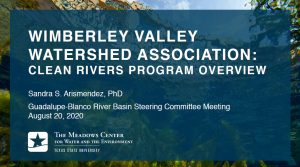
Summary of Blanco River and Cypress Creek Water Quality Data Collection, (Meadows Center, August 2020) |
Useful Links:
-
- Protect Our Blanco (POB): https://protectourblanco.org/
- Blanco Wastewater Options (WVWA): https://watershedassociation.org/protect-our-blanco/
- One Water (WVWA page): www.wimberleywatershed.org/one-water
- Ensuring One Water Delivers for Healthy Waterways: A Framework for Incorporating Healthy Waterways into One Water Plans and Projects: https://texaslivingwaters.org/deeper-dive/healthywaterways/
- Special Purpose Districts, MUDs, WCIDs & Hill Country Water Supply Issue Paper (Hill Country Alliance)